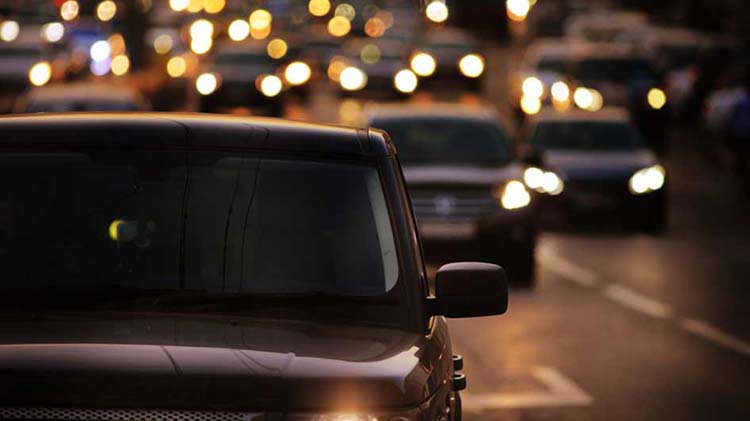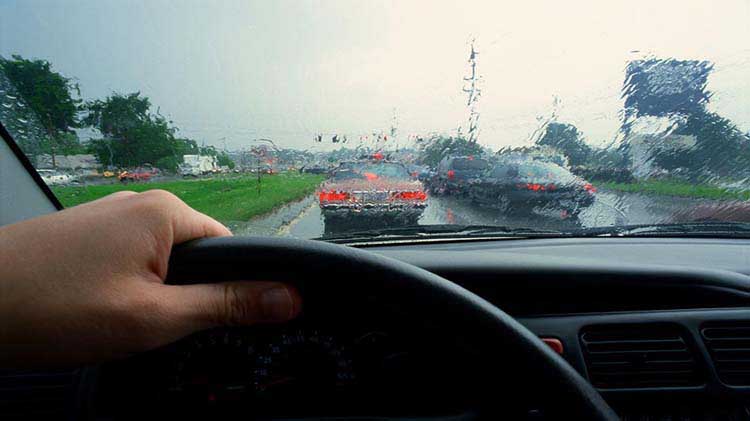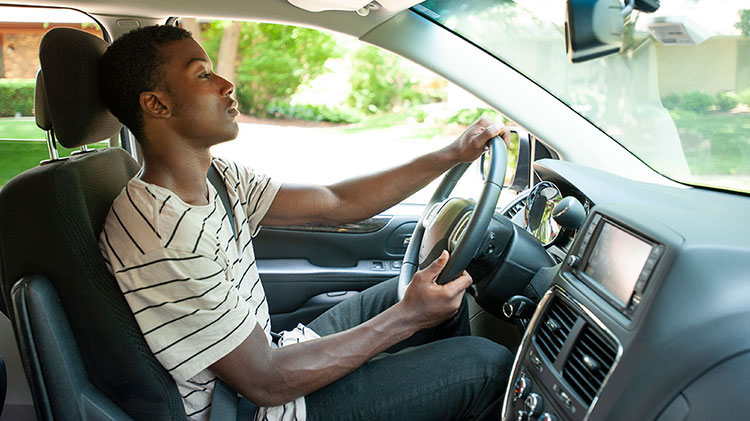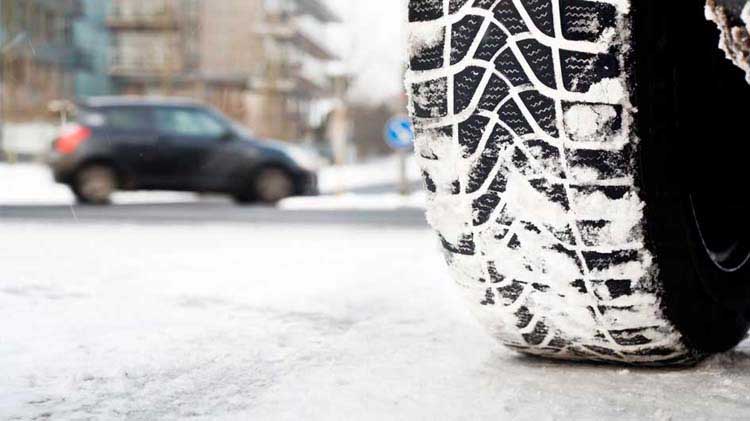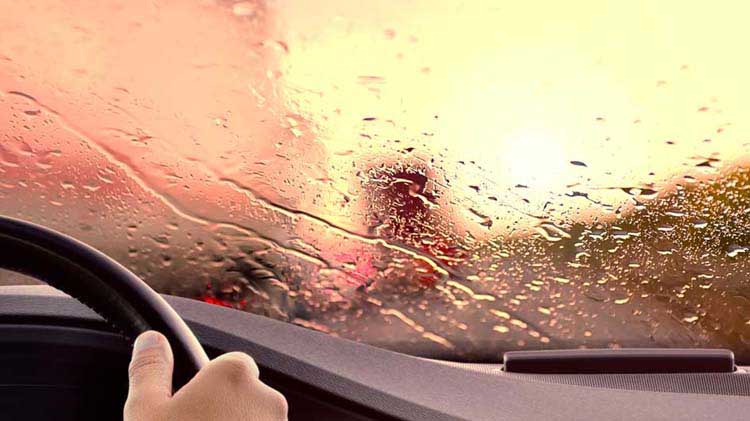Night driving and headlight glare
A dangerous aspect of night driving is the blinding glare from oncoming headlights. Here are some ideas on how to help reduce headlight glare and some general night driving tips.
According to the National Safety Council, evening and nighttime hours are more dangerous for driving. There can be many challenges in visibility, including potential blinding headlight glare from oncoming vehicles. The bright light from headlights can reduce your ability to see clearly, which can increase the risk of an accident.
Tips for headlight glare
- Know what to do if blinded. Drivers can be affected by the oncoming glare of headlights from varying distances. If a vehicle with high beams is approaching, safely slow down a little and try not to look directly at the headlights. If blinded by oncoming headlights while driving at night, look slightly to the right side of the road. You should be able to see other vehicles with your peripheral vision, but do not completely take your eyes off the road.
- Align the headlights. Your headlights need to align so the light beams produced are properly aimed at the road, which is important for visibility. Tests can be performed by a qualified mechanic to see if the lights on your vehicle are aligned properly.
- Keep the headlights clean. As much as half of a headlight's total output can be absorbed by dirt on the light's surface. Keeping headlights clean is especially important in winter, when it gets darker earlier and headlights can become frequently covered with road dirt, debris, snow and encrusted with salt. You can clean them yourself using a cleaning solution or take your vehicle to your car service provider.
- Keep a clean windshield when driving day or night. Streaks and smears on windshields can produce disorienting kaleidoscopic effects when lights shine on them at night. See that your windshield wipers work properly, your windshield wiper blades are clean and not old or worn out and that the windshield-wiper fluid container is kept filled. Also check your side and rear mirrors for smudges and clean them accordingly.
- Dim your dashboard. To help limit the amount of light that could affect your ability to see the road, adjust the dashboard to a dimmer setting. Some vehicles may adjust this automatically when it becomes dark or when your headlights are on. Some models may offer dimmers for your mirrors as well, which can help limit glare from drivers behind you.
- Be cautious when turning. Most headlights only allow you to see where the vehicle is pointing but some newer vehicles may come with adaptive headlights. These headlights adjust the direction based on the steering angle and allow you to see more of where you are going around a turn. If your car doesn’t have adaptive headlights, attempt to look in all directions, lit and unlit, before proceeding to turn.
Additional tips for driving at night
- Understand your lights. Before you depart, particularly when driving a vehicle for the first time, see that you know how your lights work and where the switches are that turn them on and off. Do this process for your main lights, your high beams and even your cabin lights.
- Keep your eyes moving and scan the area. Rather than focusing solely on the middle of the lighted area in front of you, try to continually scan the area for other lights and vehicles. Be aware of hilltops, curves and intersections. In areas with many distracting neon signs or brightly lit buildings, try to concentrate on street-level activities and your surroundings. Staying vigilant may help you spot animals and pedestrians that may impede your path, especially in areas you aren’t familiar with.
- Know when to dim your high beams to oncoming traffic. Use high beams when necessary and switch to low beams when following another vehicle or encountering oncoming vehicles. High beams let you see about 350-500 feet ahead but can also blind approaching drivers. Generally, it is recommended to dim lights when you are within 500 feet of oncoming traffic. Some vehicles have an automatic function that dims your high beams when another vehicle is approaching.
- Avoid driving when sleepy. Drowsy driving may result in slow reaction times and impaired judgment. Get a good night's sleep, pull over at a safe location or rest stop to take a break if needed and try to avoid drivers who are swerving or drifting.
- Reroute away from two-lane highways. Two-lane highways can be narrow and unforgiving yet often permit higher speeds. Opting to use multi-lane highways with wide shoulders may help with night driving.
- Turn off lights in the car's interior. In addition to dimming your dashboard, while it’s not illegal to drive with your interior lights on in most states, it can still contribute to distracted driving and become hazardous for yourself and other drivers.
- Don’t drive under the influence. Driving while using drugs or alcohol is incredibly dangerous and puts your life and the lives of others at risk. Be vigilant and aware of your surroundings when driving and operating a vehicle. When driving, especially at night, keep an eye out for cars that are moving erratically so you can try to avoid them and consider calling the police.
- Slow down. Maintaining a slower speed may allow you more time to make snap decisions and react quickly.
- Use signals. Remember to use your turn signal to indicate your intentions to drivers around you.
- Minimize distractions. Things like loud sound systems, distracting phone notifications and turning your head to speak to passengers while driving can be troublesome, particularly during the nighttime. Consider turning down the volume of your music, placing your phone on do not disturb or driving mode and limiting the amount of people you drive with at night.
- Clean and use the right glasses. If you wear glasses when you drive, opt for pairs that are anti-reflective and clean them regularly to help lessen the glare. In addition, check in regularly with your eye doctor to confirm you’re using the right prescription for your vision.
- Take extra caution if your night vision is compromised. Some individuals may have a harder time seeing during the nighttime and might want to consider reduced speeds when driving at night.
To help make your next trip a bit safer, check out more safe driving tips and vehicle maintenance tips from State Farm®. Looking to get insured? You can get an auto insurance quote now, or give us a few details and a State Farm agent will reach out to you.
